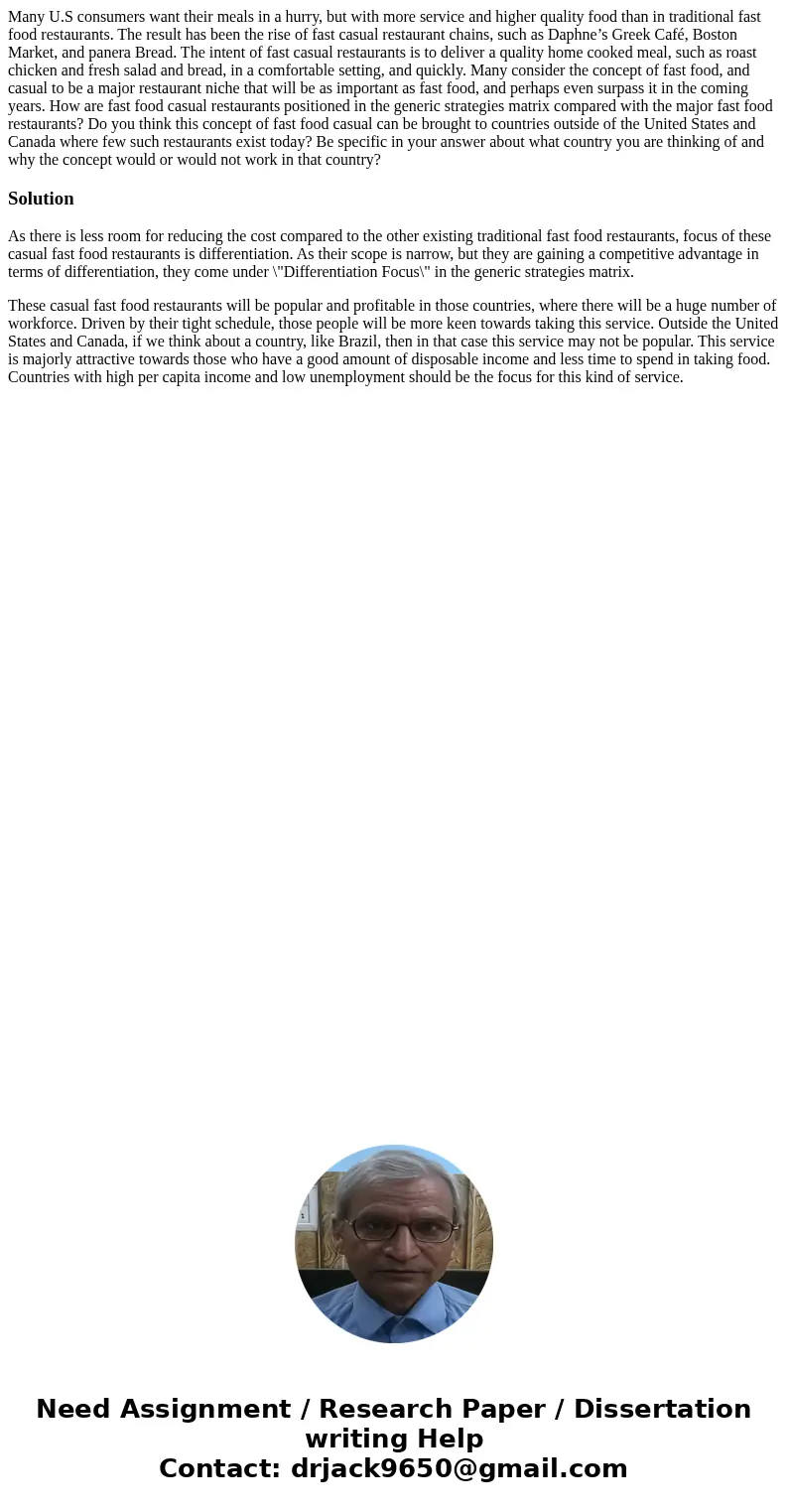Many US consumers want their meals in a hurry but with more
Many U.S consumers want their meals in a hurry, but with more service and higher quality food than in traditional fast food restaurants. The result has been the rise of fast casual restaurant chains, such as Daphne’s Greek Café, Boston Market, and panera Bread. The intent of fast casual restaurants is to deliver a quality home cooked meal, such as roast chicken and fresh salad and bread, in a comfortable setting, and quickly. Many consider the concept of fast food, and casual to be a major restaurant niche that will be as important as fast food, and perhaps even surpass it in the coming years. How are fast food casual restaurants positioned in the generic strategies matrix compared with the major fast food restaurants? Do you think this concept of fast food casual can be brought to countries outside of the United States and Canada where few such restaurants exist today? Be specific in your answer about what country you are thinking of and why the concept would or would not work in that country?
Solution
As there is less room for reducing the cost compared to the other existing traditional fast food restaurants, focus of these casual fast food restaurants is differentiation. As their scope is narrow, but they are gaining a competitive advantage in terms of differentiation, they come under \"Differentiation Focus\" in the generic strategies matrix.
These casual fast food restaurants will be popular and profitable in those countries, where there will be a huge number of workforce. Driven by their tight schedule, those people will be more keen towards taking this service. Outside the United States and Canada, if we think about a country, like Brazil, then in that case this service may not be popular. This service is majorly attractive towards those who have a good amount of disposable income and less time to spend in taking food. Countries with high per capita income and low unemployment should be the focus for this kind of service.

 Homework Sourse
Homework Sourse